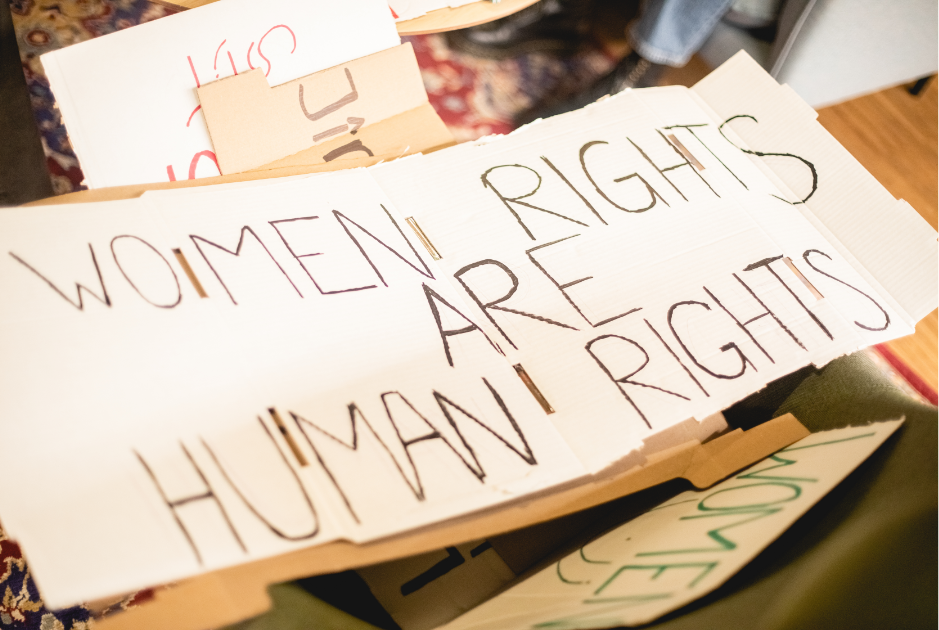Last October, in response to the worldwide refugee crisis and general encouragement from my church, my family and I signed on as volunteers with the Refugee Services of Texas. We were assigned to furnish an apartment for a refugee family of four, pick them up at the airport, bring them to their new home, provide them their first meal, and stay in contact with them.
These are 10 things I learned from the experience so far.
1. Helping people is rarely glamorous.
It’s very easy to imagine a romanticized meeting at the airport, something you’d see in a movie. The family walks out into the reception area. They see us holding our "Welcome to Texas!" sign and smile brightly. We shake hands. Then embrace. Everyone’s eyes are misty.
But the truth is they trudged through the security doors. They were tired, hungry, and confused. They were concerned about their little boys wandering off and didn’t know where their luggage would be. Their English is about as good as my Arabic. Which is to say, not. Our drive to their apartment was mostly silent due to the language barrier, jet lag, and the general awkwardness of being in a car with complete strangers.
2. Helping people is rarely convenient.
It’s nice to be helpful. Charitable. Magnanimous, even. It’s another thing to give up a couple of perfectly good weekends to spend sweating in an apartment where the air conditioning hasn’t been turned on, assembling book shelves and bed frames with Allen wrenches and hex keys.
It’s not the Peace Corps, but it’s also not writing a check to charity and getting a feel-good bumper sticker in return.
3. Most Americans can’t begin imagine what most refugees have been through.
A Syrian family waits after being escorted into the harbor by the Greek Coastguard, who found them drifting offshore in June 2015. Photo by Dan Kitwood/Getty Images.
The family we were assigned to help was coming from Syria. Actually, they were coming from a Jordanian refugee camp, where they’d been living for two years. Two years. In a tent.
Originally, they're from Homs, Syria. I’d never heard of this city, so I googled it. Homs is a 4,000-year-old city that until recently had a population of more than half a million and was a major industrial center. In 2011, it became a stronghold of the opposition forces in the country’s civil war. Homs was under siege for three years. It has since been almost completely destroyed, with thousands dead. The population is a third of what it was a decade ago. This is the equivalent of Austin, Memphis, Baltimore, or Charlotte being reduced to rubble, the population decimated by our own military.
I found myself asking, "Where would you go? Where could you take your children?"
4. Most Americans are incredibly generous.
The Refugee Service of Texas gave us a list of what this family would need upon arrival. It included everything from mattresses and chairs to cleaning supplies and deodorant. My wife created a registry at Walmart, and we posted it on Facebook. Within a day, 80% of the items were purchased by generous friends from across the United States and even a handful from overseas. By the end of the week, everything had been purchased, and friends were asking if they could continue to make donations in other ways. Most are good people who want to help. They just need to know how.
Our front room, loaded with donations from generous friends around the world. Photo via Greg Christensen.
5. Most Americans don’t know the difference between refugees and immigrants.
In our current political climate, refugees and immigrants are frequently confused or lumped together for expediency. More often, both are simply labeled "foreigners." And not in a good way.
Here’s a simple truth to keep in mind: Immigrants come to this country of their own accord hoping to make a better life for themselves. Refugees flee from their homelands to any country that will take them because their lives are in danger for religious or political reasons. An immigrant hopes to move into your home. A refugee shows up on your doorstep bleeding.
6. Technology is amazing.
Although the wife and mother of the family is fairly conversant in English, her husband and I communicate with Google Translate. I type in an English sentence, the app renders it in Arabic, and I show him my screen. He types in something in Arabic, it’s rendered in English, and he shows his screen to me. It’s very "Star Trek."
7. This is about their kids.
The father, admittedly, would return to Syria if he could. It’s his home. It’s his culture. His people. But he knows his family has nothing to return to, and he knows his children can thrive in the United States. He’s willing to make that sacrifice for them.
8. This is about my kids.
My children helped assemble furniture in their apartment. They were there when the family arrived bleary-eyed and hungry at the airport. My kids have seen their gratitude and sensed their anxiety. Most importantly, my kids know what it’s like to extend a hand to another human being in need.
9. The refugee crisis is real.
A refugee family walks through a field toward the Greek-Macedonia border. Photo by Dan Kitwood/Getty Images.
Today, we tend to equate refugees with Syria because of the civil war — because we’re told ISIS will exploit the refugee camps. But leave theory and politics aside for a second, and consider the fact that there are persecuted Christians in the Democratic Republic of Congo currently seeking refuge. There are hundreds of thousands of refugees from countries nowhere near the seven listed on the president’s current travel ban. While many refugees come from Afghanistan and Somalia, there are also refugees from places like Vietnam, Eritrea, and China who are tired, poor, and yearning to breathe free.
10. Fear and ignorance breed apathy and inaction.
After posting updates on Facebook about our refugee family, I’ve received comments about the need for our country to be safe, for our borders to be secure. I don’t argue that, but these are stock answers. I’ve perceived a swelling refugee villainization birthed from understandings that are over-simplistic at best and ignorant of facts at worst.
When we can rationalize not helping others because of a platitude, it gives us permission to do nothing. When we hastily claim we are for safety, we should ask ourselves if we aren’t really saying we are in favor of not leaving our comfort zones and doing the hard work of being useful.
Refugees are human beings. Treating them as such is a necessity.
Syrian refugees have their portrait taken in the basement of a community center in Hamburg, Germany, where they are living. Photo by Astrid Riecken/Getty Images.
When we took the family to their new apartment, they had friends waiting for them. They were other families they’d known from the Jordanian refugee camp where they’d spent the past two years. They were former denizens of a crippled and shattered city. The women kissed each other. The men kissed hugged each other before kneeling to hug the kids. We got to see their children literally jump for joy.
We didn’t understand their language, but we understood a little better what it meant for people to have hope.
This story first appeared on Medium and is reprinted here with permission.
- Three-year-old Ayaan is inspiring everyone with his positive self-affirmations - Upworthy ›
- How to help women and girls in Afghanistan - Upworthy ›
- Four facts about refugee resettlement in the U.S. - Upworthy ›
- Afghan refugees need us. So do millions of other refugees. - Upworthy ›
- Teenager who swam for 3 hours to escape war in Syria goes to Olympics - Upworthy ›
- When African students faced discrimination fleeing Ukraine, Asmara’s World stepped up - Upworthy ›
- Doctors warn pimple poppers of 'triangle of death' on face - Upworthy ›
- Why more people are going 'no contact' with their families - Upworthy ›
- Woman grabs guy in Walmart, asks him to be husband - Upworthy ›





 What was I doing again?
What was I doing again? A space waitress at work.
A space waitress at work.  Waking Up Funeral GIF
Waking Up Funeral GIF Rihanna Nails GIF
Rihanna Nails GIF Yoga pants.Image via Canva.
Yoga pants.Image via Canva. Our natural lashes are nice just the way they are!
Our natural lashes are nice just the way they are! One step forward, many steps back. Image via Canva.
One step forward, many steps back. Image via Canva.  Homelessness is especially rampant on the West Coast.Image via Canva
Homelessness is especially rampant on the West Coast.Image via Canva